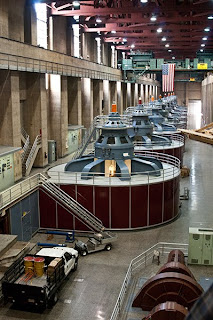
The McDonald's story, succinctly and in a nutshell, is as follows:
Ray Kroc, at age 52, was a milkshake mixer salesman who found out that a restaurant in San Bernadino, CA. had just placed an order for 8 MultiMixers, each being capable of making 5 milkshakes at a time. "Who could possibly need this many milkshakes at one time?" he thinks. And he decides to find out.

When he gets to San Bernadino, he finds a small drive-in, where customers either walk up or are served by car hops. It is run by brothers Richard and Maurice "Mac" McDonald. Ray watches from the sidewalk as people greedily devour their hamburgers, fries and the shakes he has come to investigate. He realizes the McDonald boys have a good thing going. Eventually he offers to buy them out. They agree.

Kroc sets up his first franchise store in Des Plaines, but the original McDonald brother's location remains on historic Route 66 in San Bernadino. The store is now long gone, but rival Juan Pollo (a chicken fast food joint) bought the land for an office and converted more than half the building into a McDonald's museum. Route 66 items are included, as are -- surprise -- a wee tiny bit of Juan Pollo artifacts. To tell the truth, the only Juan Pollo artifact we found was one stuffed chicken. You'd have thought they'd have put more of their own stuff in there, but I've never been to a Juan Pollo eatery, so for all I know it might be all they have. Here's their "poultry in motion:"

McDonald's memorabilia was everywhere. Old french fry paper sleeves, small toys that were once give-aways, kiddie rides, fun mirrors, pictures of youthful employees smiling as they posed with Ray, employees smiling while serving customers, or, somewhat creepily, pictures of them pledging allegiance -- hopefully to the United States, but scarily we suspect to McDonalds.



So I asked John to go pose with the "purple thing:"




He was understandably confused. But when he found Ronald, he knew he deserved a break today! And I'm lovin' it!









































